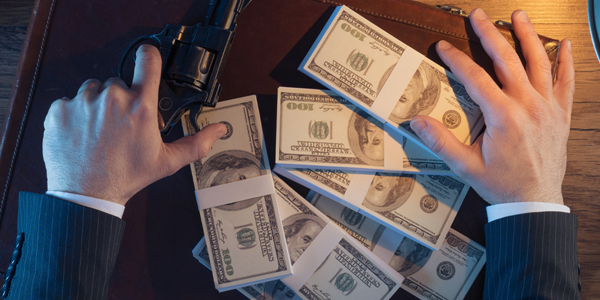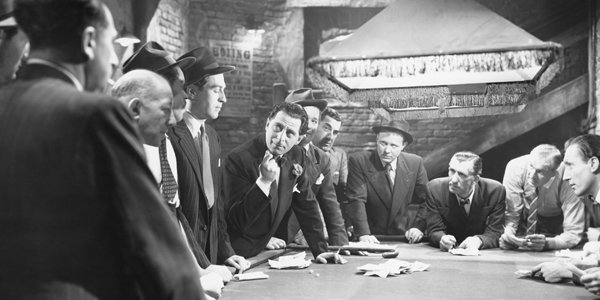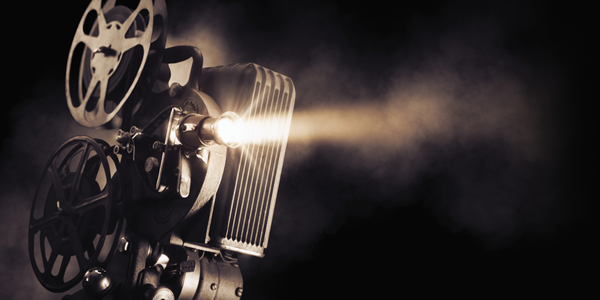Famous Cuban Mobsters
Before Fidel Castro’s revolution succeeded in taking over Cuba, the government of President Fulgencio Batista engaged in an alliance with very famous mobsters. Cuba was somewhat of a safe haven, bought from Batista over many years with ill-gotten gains and money from gambling operations on the island. Of course, that corrupt relationship was not the sole reason for Batista’s downfall. He was corrupt way before the mob hit Havana, but the partnership became a symbol of what was wrong, and it became a target of the revolution. And, as we well know, the impact on the cigar industry was devastating, with Castro nationalizing the industry.
The Mafia in Cuba
The Oscar winner for best picture in 1975, The Godfather Part II, depicts, with liberal cinematic license and time compression, salient elements of the Mafia in Cuba. Essentially, America’s gangsters divided Cuba and created an illicit playground for gamblers. In the film, the conference of mobsters occupies about 25 minutes and is proximate to the New Year’s Eve of 1958 when Batista fell and fled the country. In reality, the conference of about two dozen high-ranking mafiosi happened in 1946 at Havana’s Hotel Nacional.
At the real conference, momentous things did take place. Lucky Luciano, the de facto boss of all bosses, gave a green light to Meyer Lansky’s plan to carve up Cuba and build casinos the mob would control. Operations in Cuba were set up under the supervision of four Mafia families. Additionally, the decision was made to “whack” Bugsy Siegel. Lansky, Luciano, and Siegel were close friends from boyhood, but Siegel had been skimming from the construction budget of the Flamingo Hotel in Las Vegas.
Mobsters in Cuba: The Big Players
Lucky Luciano
The biggest mobsters who operated in Cuba are now legendary figures in the annals of organized crime. At the top is Charles “Lucky” Luciano. Luciano was born Salvatore Lucania in 1897 in the same Sicilian town from which Frank Sinatra’s family hailed. In 1936, Luciano was convicted in New York for compulsory prostitution and running a prostitution racket. He was sentenced to 30 to 50 years in prison, but an agreement was reached with the Department of the Navy, a deal that was shepherded by Lansky, for Luciano to provide naval intelligence during World War II. At the end of the war, in 1946, for his reported cooperation, Luciano’s sentence was commuted on the condition that he be deported to Italy and agreed to give up his US citizenship. Luciano went to Italy – he was supposed to be in Sicily – but in October of 1946, Luciano secretly moved to Havana, taking a freighter from Naples to Venezuela, then flew to Rio de Janeiro, then to Mexico, back to Venezuela and finally a private plane to Cuba. He set up house in the Miramar section of Havana. Luciano’s objective in moving to Cuba was to be closer to the US, with the ultimate goal of moving back. In 1947, the US government “persuaded” Cuba to send Luciano back to Sicily. With Luciano out of Cuba, a new leader emerged.
Meyer Lansky
Nominally just under Luciano, Meyer Lansky was the financial brains of the mob. Lansky, born Maier Suchowljansky in 1902 in Russia, was a member of the Jewish mob in the US, but had an alliance with La Cosa Nostra through his boyhood friendship with Luciano. By 1936, Lansky had set up gambling operations in Florida, New Orleans, and Cuba. He built the empire on two principles. First, Lansky’s mathematical and management acumen gave the operations effective knowledge of the odds. Second, the mob connections and the bribing of law enforcement gained the casinos needed security from legitimate policing and other crime organizations. Further, if oddly, Lansky’s casinos offered gamblers an unrigged game. Perhaps one blemish in Lansky’s career was his investment in Bugsy Siegel’s Las Vegas Flamingo. Still, Lansky protected himself from the kind of prosecution that brought down Al Capone. Lansky not only had his casino profits transferred to an anonymous Swiss bank account; he also later bought an offshore Swiss bank to launder money. Lansky was the main engine in developing Cuba as a mob stronghold. In the late 1940s, Lansky met with Batista at the Waldorf-Astoria Hotel in New York and struck the deal. For hefty kickbacks, Batista gave Lansky control of Cuba’s casinos and racetracks. This deal is what led to the 1946 mob summit in Havana. Despite his nearly 50 years as a member of organized crime, Lansky was never found guilty of anything more serious than illegal gambling.
Lansky had gotten acquainted with Fulgencio Batista some years before their New York meeting. While the mob had been present in Cuba since the early 1920s, the beginnings of a criminal empire really started in 1933 when Lansky, on the orders of Lucky Luciano, and then-Colonel Batista got together. Batista had risen to power in that year’s “Revolt of the Sergeants.” Batista appointed himself chief of the armed forces. The military in Cuba was the entity that actually had the power. Lansky guaranteed Batista between $3 million and $5 million a year, plus a cut of the profits, for a monopoly on casino gambling.
The first big industry for the new venture was the trafficking of drugs, using Cuba as a midpoint between heroin and cocaine sources and the market in the US. Batista was elected president in 1940. He later became the hand-picked dictator of Cuba by the US from 1952 until 1959. Besides drugs, prostitution and gambling became core businesses of the mob in Cuba. In the end, Batista was reportedly collecting at least 10 percent of the gambling profits nightly from some casinos, and up to 30 percent from others.
Amleto Battisti
One of the four families that got a piece of the action was headed by the Uruguayan Amleto Battisti. Battisti had been operating as a businessman in Cuba since about 1930. He had solid connections among Cuba’s politicians and was a notorious mobster. Battisti handled the gaming operations under the agreement that came out of the 1946 summit.
Amadeo Barletta
One story has it that another businessman, Amadeo Barletta, a successful Italian entrepreneur, handled the money laundering once Cuba had been divvied up. That tale is disputed with many calling it a scheme to discredit the legitimate businessman. Barletta had been involved in the tobacco business in the Dominican Republic but ran afoul of Dominican strongman Rafael Trujillo who had a monopoly with a US company. Barletta was thrown in jail and was released after Benito Mussolini intervened. Barletta then moved to Cuba in 1939 and became the first exclusive distributor for General Motors. Some stories called Barletta a mobster, while others have him working undercover for years as an agent for Italian and US intelligence.
Santo Trafficante, Sr.
Among the big players in Cuban mob pursuits was Santo Trafficante, Sr., a Sicilian-born mobster who based his operations in Tampa. Trafficante operated in Cuba out of the Sans Souci nightclub. Since the early 1930s, Trafficante had been in charge of cocaine distribution channels from Colombia using Cuba’s military airports as waystations in transporting the drugs to the US. Trafficante was thought to be the underboss in Cuba and controlled the network of casinos and prostitution, along with the cocaine business. Later, after Castro came to power, the story goes that Trafficante, along with Sam Giancana, was recruited by the CIA to assassinate the Cuban leader.
Joe Stassi
Someone had to run the day-to-day business and that fell to Joe Stassi. Stassi, a feared hitman, was a Gambino family soldier who later organized the 1957 assassination of Umberto “Albert” Anastasia, a boss in the Gambino family and founder of Murder, Inc. Stassi was considered a neutral figure by the other crime families, and weekly meetings were held at his house in Havana. On New Year’s Eve 1958, as chaos reigned in Havana after it was clear that Castro was going to win, Lansky sent as much money as could be gathered from the casinos to Stassi’s house.
Bit Players
Al Capone
Al Capone ran liquor through Cuba during the days of Prohibition and was invited to attend the 1946 summit, but he had just gotten out of prison and was already very ill.
Frank Sinatra
No, Frank Sinatra wasn’t really a mobster, but he knew them and had an affinity for them since growing up in Hoboken, NJ. In 1947, Ol’ Blue Eyes arrived in Havana carrying a suitcase filled with $2 million in cash. Sinatra was escorted by the Fischetti Brothers – Charlie and Rocco – from Chicago. They were cousins of Al Capone and had been involved in gambling and killing. Sinatra, obviously well known internationally, checked into the Hotel Nacional under a false name and delivered the money to Luciano.
Book Recommendation
If you want to know more about all this, the best book I’ve found on the subject is Havana Nocturne: How the Mob Owned Cuba and Then Lost It to the Revolution by T.J. English.







